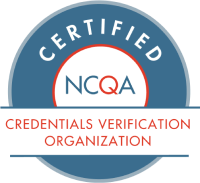Andros Insights
Take deep dives into credentialing, provider network management, and healthcare administration news, best practices, and technology with expert members of the Andros team.

Beyond PDM: How The Network Lifecycle Platform Elevates High-Performing Networks
When it comes to building and managing a high-performing provider network, it’s easy to think of Provider Data Management (PDM) and the Network Lifecycle Platform (NLP) as interchangeable. While the two are closely connected, they serve very different purposes, and understanding those differences is essential. Let’s explore the difference between the two, why it matters, and how they work together

Innovators In Action: Case Studies Shaping The Future Of Provider Networks
In the fourth and final session of the Chief Network Officer Roundtable, a panel of experts brought the conversation down to earth with practical, tested strategies for modernizing provider networks. This session featured insights from Darla McGahee, VP of Network Development, XO Health, Colin Blaney, Senior Partner, HealthScape Advisors, and Mike Ferson, Senior Partner, HealthScape Advisors, who shared perspectives on

Patient Stories To Network Strategies: Putting Members First
In the latest session of the Chief Network Officer Roundtable, the focus shifted squarely to the member. Featuring speakers Scott VandeSand, Director, Health Program Support and World Trade Center (WTC) Health Program at Karna, and Jeff Fritz, CEO at Andros, they explored how data, empathy, and proactive planning can create more responsive and resilient provider networks. Precision starts with understanding

The Provider Perspective: Building Better Partnerships With Health Plans
At the second session of the Chief Network Officer Roundtable, two seasoned leaders—Dr. Tarek Elsawy, EVP at Emerja Corporation and Melissa Kittelson, Chief Network Transformation Officer at Andros—offered a candid, provider perspective on where health plans get it right, where they don’t, and how to build better partnerships going forward. While the conversation touched on everything from administrative burden to

Andros Achieves Dual Recognition With URAC Accreditation And NCQA Compliance
Andros, the leading network lifecycle platform solution, today announced it has achieved the full three-year CVO accreditation from URAC—Utilization Review Accreditation Commission—a national leader in promoting healthcare quality through accreditation, certification, and measurement. “Earning URAC accreditation is a powerful validation of our operational rigor and the trust our clients place in us,” said Mark Hirschhorn, Vice President, Compliance Officer at

Leading The Shift: How Chief Network Officers Drive Organizational Transformation
For too long, provider network operations have lived in the background—overseeing credentialing, ensuring compliance, and generally keeping the wheels turning. But as healthcare becomes more complex, competitive, and consumer-driven, network leaders are stepping into a new role: strategic facilitators of growth, innovation, and operational excellence. That evolution was the focus of the opening session of the Chief Network Officer Roundtable,

Presenting NLP Marketplace – The Ecosystem That Supercharges Your Network Lifecycle Platform
Managing a high-performing provider network shouldn’t mean choosing between innovation and integration. Yet for many health plans, that’s exactly the challenge. You’ve adopted new tools that promise to be end-to-end solutions, only to find yourself buried under a mountain of point solutions that don’t play well together. At Andros, we believe it’s time for something different. The NLP Marketplace is

Andros Introduces Network Transformation Team to Drive Provider Network Innovation
[NEW YORK, April 1, 2025] Andros, the healthcare industry’s leading network lifecycle platform, introduces its Network Transformation Team—a strategic expansion designed to help health plans optimize key provider network categories, including: improvements to operational efficiency, strengthening provider relationships, enhancing compliance, and improving overall performance through data-driven insights. Led by healthcare industry veteran Melissa Kittelson, who has over 30 years of

A Closer Look At The 2025 NCQA Credentialing Requirements
Big shifts are coming to credentialing, and the July 1, 2025 NCQA updates are just the beginning. At Andros, we’re not just preparing for change—we’re built for it. Our recent full, three-year CVO accreditation from URAC, alongside our longstanding NCQA certification, puts us in rare company—fewer than 25 credentialing organizations nationwide hold both. These milestones aren’t just recognition, but validation

Andros Advances Breakthrough Network Lifecycle Platform Category
[NEW YORK, March 18, 2025] Andros, the leader in network lifecycle technology and solutions, is setting the standard with the introduction of the Network Lifecycle Platform (NLP), a first-of-its-kind approach to provider network management. This innovative healthcare platform orchestrates the ecosystem of solutions and technologies to create higher-performing networks that support the entire provider network lifecycle. “For too long, healthcare

New Chief Network Officer Roundtable: Four Must-See Sessions on Network-Led Strategy
The role of the Chief Network Officer (CNO) has never been more critical. Provider networks must be built with strategy, efficiency, and precision in mind to ensure better healthcare outcomes for all. That’s why we’re excited to announce the Chief Network Officer Roundtable—a 4-part webinar series designed to provide valuable insights, best practices, and actionable strategies for building a network-first

(Re)Introducing the Most Strategic Leader in Healthcare – The Chief Network Officer
Ask any strategic leader at a health plan about their top priorities, and you’ll likely hear a lot about member experience, cost management, and quality of care. One of the most powerful tools a health plan has to impact these areas is its provider network—yet both the network and the role of the Chief Network Officer (CNO) are often underutilized.

Andros Launches Arc Workflow to Streamline Healthcare Data Integration
NEW YORK, February 18, 2025 – Andros, the healthcare industry’s leading network lifecycle platform, announces the launch of Arc Workflow, a comprehensive automation and integration solution that connects the people, processes, and technologies that work together to deliver optimal network performance, better provider experiences, and the right care for members. “Arc Workflow is a game-changer for the industry,” said Kyle Gunderson,

Why Provider Network Inefficiencies Are Costing Healthcare Billions (Infographic)
Infographic Why Provider Network Inefficiencies Are Costing Healthcare Billions Provider network inefficiencies are draining billions from healthcare—but they don’t have to. Learn how outdated processes, fragmented data, and manual workflows are driving up costs and slowing down operations, and how Andros Arc helps you fix it by automating workflows, eliminating data silos, and reducing costly errors. What you’ll learn: The

How To Future-Proof Your Provider Network with Data, Automation, and Lifecycle Precision
In an era where healthcare is evolving faster than ever, health plans and provider networks must adapt to unprecedented challenges. From shifting regulatory landscapes to the increasing complexity of patient needs, success requires more than incremental improvements—it demands rethinking the fundamentals of provider network management. Why Networks Need a New Approach Healthcare’s challenges are growing more complex by the day:

Bringing Healthcare Networks to the Forefront: Insights from the Andros Customer Advisory Board
At Andros, we believe that great solutions are born from great collaboration. This belief was front and center at our inaugural Customer Advisory Board event—a milestone gathering of healthcare visionaries representing diverse roles and organizations. Over the course of the event, we explored the evolving challenges and opportunities in provider network management, grounded in the shared goal of delivering better

You Spoke, We Listened: What We Heard From Payers at HLTH
The HLTH conference is always a great place to take the temperature of healthcare and get a sense of where the industry is headed, and HLTH 2024 did not disappoint. Artificial intelligence-powered patient monitoring tools and virtual telehealth solutions generated lots of buzz, and they highlighted an underlying truth that in healthcare, everyone is trying to find ways to do

Automate and Simplify State License Verifications
Navigating the complexities of state license verification for providers can be challenging for health plans. Each state has unique requirements and processes, making it difficult to ensure providers are licensed and compliant across multiple jurisdictions. To help health plans combat these complexities, we’re now offering a State License Verification solution automates this process, bringing efficiency, accuracy, and compliance to your

A New Era at Andros: Introducing Andros Arc™
It’s an exciting time at Andros. We’ve just launched Andros Arc™, a reimagined network lifecycle platform. This new generation of provider network management capabilities positions healthcare organizations for what’s to come. Andros Arc unifies data from over 250 sources and integrates 7.5 million National Provider Identifiers (NPIs) into a connected provider graph, helping health plans and other healthcare organizations build

Rising Healthcare Costs—What Health Plans Need to Know Now (and in the Year Ahead)
The respected accounting and auditing firm PwC has released a new report titled “Medical Cost Trend: Behind the Numbers 2025.” It contains valuable forecasts for the upcoming year in healthcare, crucial insights behind the trends, and ideas around cost containment in a fiscal environment that will present continued challenges for payers. To compile the report, PwC’s Health Research Institute (HRI)
